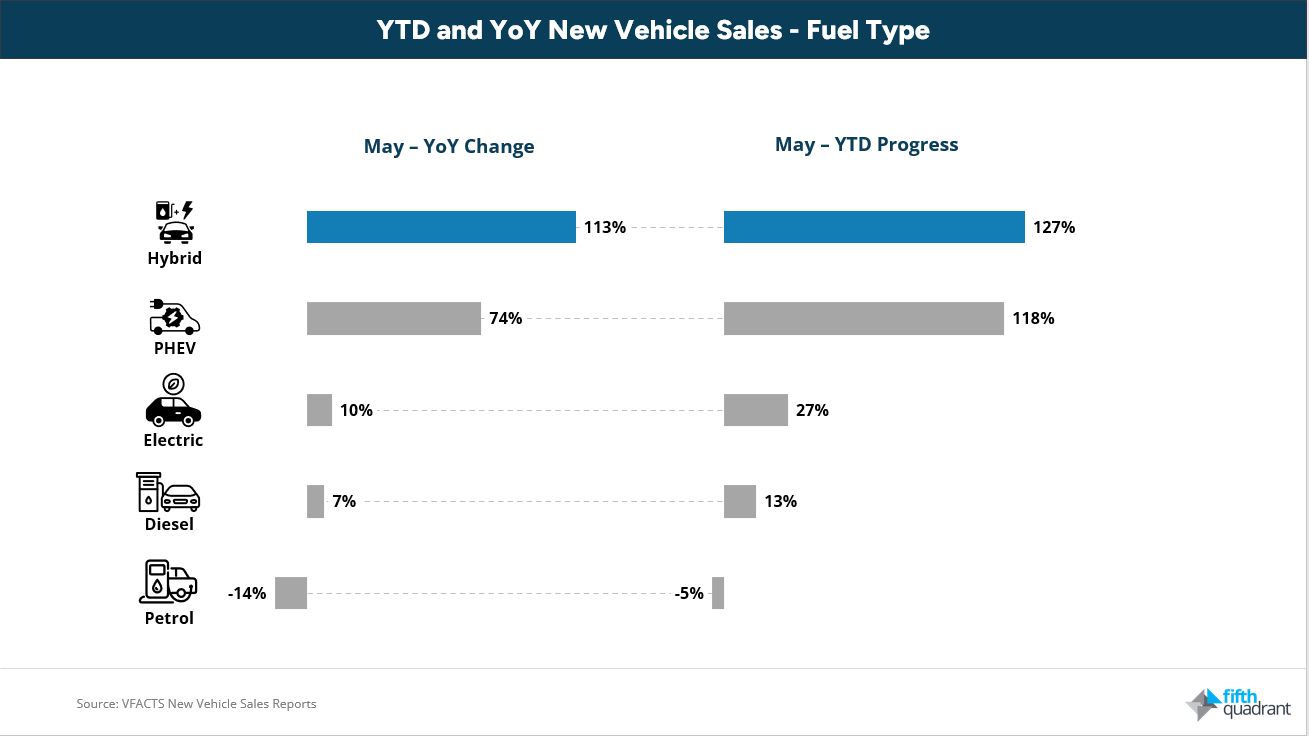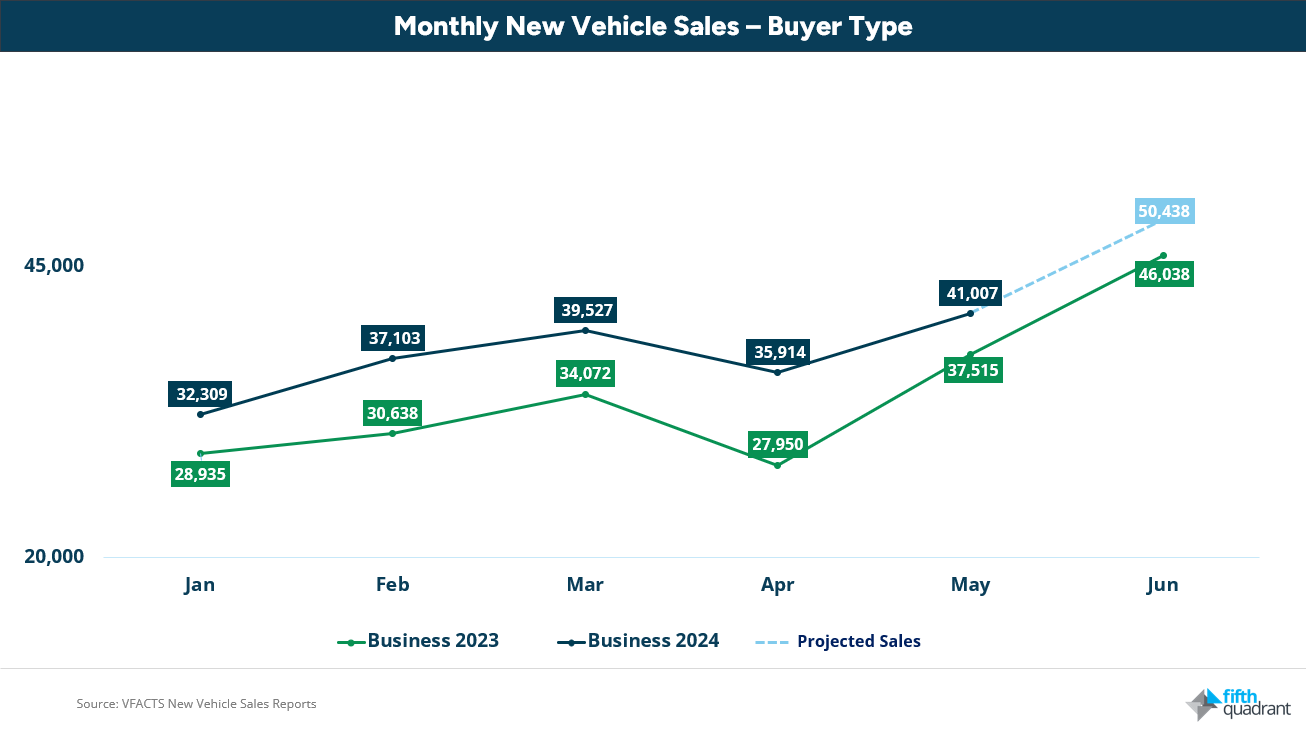Author: Ben Selwyn | Posted On: 12 Jun 2024
Australia’s automotive industry has continued its record-breaking new vehicle sales streak, reaching an all-time record high for the month of May. Despite April dipping back below 100,000 sales (97,202), May surged again, with a total of 111,099 vehicles sold. This is more than 5% up on last May’s strong 105,694. Year-to-date sales now stand at 512,752, up 55,920 on 2023 (456,833).
top takeaways:
- Year-to-date sales are 55,000 units ahead of this time last year, marking the first time Australia has reached 500,000 sales within the first five months.
- Toyota continues its impressive momentum with 23,389 units sold, followed by Ford with 8,806 sales, and Mazda with 8,002.
- The Ford Ranger returned to the top of the charts with 5,912 sales, closely followed by the Toyota Hilux (5,702), and the Toyota RAV4 with (5,517).
- Hybrid sales are back on the charge, with May up 113% year-over-year and the YTD result 127% higher compared to this time last year.
- Heading into the end of the financial year, strong business sales from May indicate a promising result for June.
Hybrid sales steal the spotlight from EV
Headlines are typically focused on increasing electric vehicle (EV) sales across Australia’s automotive industry, but the data suggests that hybrids have stolen the spotlight. Hybrid sales in May 2024 have surged by an impressive 113% YoY, growing from 7,600 to 16,218 units. The YTD numbers are even more impressive, with the current total of 66,437 hybrid sales reflecting a 127% increase compared to last year.
This remarkable growth has been largely driven by Toyota, whose hybrid volumes have more than doubled this year to 46,821 vehicles sold year to date, now accounting for 47% of its total sales (with Toyota representing 71% of all hybrid vehicles sold in Australia). This trend is expected to continue, especially as Toyota Australia has announced that as of June 5th, they will no longer sell petrol-only versions of the Corolla Cross, RAV4, and Kluger. This means that eight of its key passenger car and SUV models are now hybrid-only. This shift is likely to work in tandem with the incoming New Vehicle Efficiency Standard (NVES) to further depress sales of petrol and diesel vehicles, paving the way for hybrids, plug-in hybrids and EVs to dominate the market.

trends point to a big EOFY finish
Shifting focus to buyer types, businesses are increasingly accelerating their vehicle purchases as the end of the financial year approaches, with this surge likely driven by the desire to capitalise on tax benefits and year-end deals. Looking back to 2023, the month of June saw a significant 22% increase in vehicles sold to businesses, rising from 37,515 in May to 46,038 units. This trend indicates a strategic move by businesses to optimise their financial positions before the fiscal year ends.
If we apply a similar growth trajectory to the 2024 sales figures, we can anticipate business vehicle sales to potentially reach around 50,000 units in June. This would not only reflect a consistent upward trend but also mark the highest number of vehicles sold to businesses in a single month since June 2018.

Looking ahead
Exciting developments continue in Australia’s new vehicle sales arena, especially as June typically sets the high water mark for sales in a single month of the year. With that said, we are hearing anecdotal feedback about increased vehicle supply changing the dynamic between buyers and sellers, so it remains to be seen which brands are still running a backlog of orders, and which need to offer more significant EOFY discounts to clear excess stock.
We’ll be closely tracking these trends, as despite these changes, the Australian auto market shows no indications of slowing down. Keep abreast of our monthly updates to stay informed about this ever-evolving industry.
Also remember that our b2b and consumer tracking research runs monthly. Click here to find out more, and feel free to get in touch if you’ve got questions that you’d like to answer.
Posted in Auto & Mobility, B2B, QN, TL, Transport & Industrial, Uncategorized

